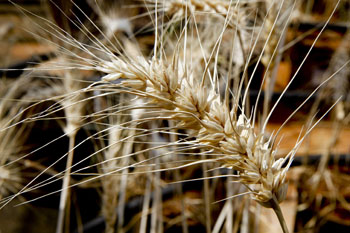
Photo: Hannes Pieterse |
Since attending the 2014 Youth Ag-Summit in Canada, Lisa Coetzee – an MSc student in Plant Pathology in the Department of Plant Sciences at our university – developed a plan to address hunger:
FEED – Forum of Education, Empowerment and Development.
Coetzee, together with a junior lecturer at Plant Sciences, Marguerite Westcott, started this student association to tackle the issue of food insecurity head-on.
Education, empowerment and development “are keywords vital to the solutions to poverty. Hunger is an issue which is found in our own homes. One in every four South Africans is food insecure. Hunger kills more people every year than Aids, malaria and TB combined,” says Coetzee.
“This forum allows awareness to be raised about the hunger situation locally and globally. FEED is talking about hunger and it is assisting in reducing it by reaching out to communities which are in need.
“FEED is the generation which is going to make a difference in eradicating hunger,” Coetzee continues. “We want students to think about how they can feed the hungry through what they are studying”. For Coetzee it is a high priority to ensure that the youth are aware of the importance to feed our hungry planet in a sustainable way.
Her philosophy on relieving hunger and increasing food safety is to enhance the efficiency of crop production, ensure crop security and reduce mycotoxins in the food we eat.
During the 2014 summit, Coetzee was elected to represent the African delegates on the Youth Ag Summit Committee. Ever since, she has been enthusiastically active in the agricultural community. As 43% of the globe’s farmers are women, Coetzee also feels she acts as a voice for female farmers in South Africa.
An important lesson Coetzee has learned is that there is power in one person to make a change – that we should start small but think big.
If you would like to get involved in this project, contact Lisa Coetzee on +27(0)51 401 9681 or email coetzeela@ufs.ac.za.